By Chandi Wyant
The Arabian Gulf may be filled with souqs, but only Souq Waqif in Doha can claim to be historic, authentic, and totally entertaining. Qatar-based historian Chandi Wyant takes us on a tour.
DOHA, Qatar – Doha is in the process of transforming itself from a quiet town of pearl divers to one of the most important cities in the Gulf region. I’ve been living and working here for three years, teaching at the community college. It’s an incredible time to visit.
And of the many things to see and do, my favorite is Souq Waqif (translation: “standing market”), an open-air working market and dynamic public space that covers about four blocks at the heart of the city close to the Corniche, the curving road along Doha’s seafront.
I am particularly fond of the souq because I’m a historian living in a country where historical sites are few in number, and Souq Waqif provides a sense of the past and of Qatari authenticity. The souq dates back to the 19th century when the Bedouin converged here by camel to sell wood, coal, sheep, and camel milk. By the end of the 20th century, the souq was in disrepair. But on an edict of the Emir, it was carefully remodeled between 2004 and 2006 using traditional methods. Artisans recreated walls of sun-baked bricks, avoiding steel reinforcements and using only wooden poles. Roofs were recreated in the traditional manner: bamboo covered with matting and a layer of clay. Because of the materials used and because it’s still a working market, Souq Waqif does not smack of a theme park like the souqs in Dubai.
A vibrant souq with beautiful architecture — easily the most attractive in the Gulf — Souq Waqif has rehabilitated memories of old Qatar and enhanced Doha’s cultural identity.
Locals are thrilled with the renovation. You can see them here every night of the week, sitting at outdoor cafes, smoking shisha until late into the night.
I like to wander the twisting inner lanes, which are cool and inviting. I always see something new to photograph. If I am lucky to get a table outside at one of the many restaurants, I’m in for the best people-watching in the city.
The souq is hopping every night, often with live musical acts and street performers — costumed acrobats on stilts brought in from other countries for entertainment. Despite the liveliness, the atmosphere is always relaxed and totally safe. Every time I come to the souq, I end up hanging out twice as long as I expected and being thoroughly entertained the whole the time.
HOW TO NAVIGATE THE SOUQ
A few things to know before you go.
The shops in the souq close from noon to 4 p.m. The best time to visit is from 4 p.m. through the evening. Shops tend to close around 11 p.m., although places like Tajine are open 24 hours. Expats like to go to the souq as late as midnight to smoke sisha and chill out after dancing at a club.
The places I recommend do not have addresses, which is why I often describe the locations based on nearby landmarks. But the souq is relatively small and everyone is very willing to help.
If you’re a man, don’t ask a local woman wearing an abaya for help because it puts her in a compromising position of talking to a strange man. Both genders should feel free to ask local men for assistance. Qatar has a strong tradition of honoring guests, and, if a local man doesn’t speak English, he’ll find someone who does to help you.
A note about spelling. In Qatar, it’s “souq,” with a Q.
WHERE TO EAT
Argan
I come to this refined restaurant in the Al Jasra Hotel for the best Moroccan food in town and impeccable service. The lamb tagine with prunes is five-star.
Shebestan Palace
Qatar’s best Iranian food is found here, on the main street of the souq, tucked between cafes. The unusual entrance will compel you to enter the hallway of glass and mirrors, where a woman in traditional Persian attire will lead you to a stunning circular room with a fountain in the middle — a hidden Persian garden. The mixed kebab plates are the most popular, and a good way to try a variety of Iranian kebabs. Or go for an Iranian curry with lamb and eggplant. Come hungry. Portions are huge.
Al Matbakh Rooftop Grill
The views are of Doha’s iconic skyline and the menu includes hammour, the local fish delicately cooked in a tandoor oven; murgh malai, chicken with yogurt, garlic, and ginger; Wagyu beef; camel meat; and rock lobster. Located in the Arumaila Hotel.
Zaatar W Zeit
A low-key place for snacks or light meals of manakeesh, Lebanese flat bread served with toppings like labneh, halloumi, and zaatar. The outdoor tables are in a great people-watching location on the main drag near The Village Restaurant.
Khobez Ergag
The name means “thin bread.” Don’t ask me how to pronounce it, but put Nutella on it, and I’ll eat it! Head to the side of the souq in the direction of the Aurmaila Hotel until you will see an area by the road where abaya-clad women are cooking these crepe-like treats on outdoor stoves.
Al Akar
Stop here for the best khonafa, a typical Arab sweet, in Qatar. The name on the sign is only in Arabic, so just look for it across from The Village restaurant.
WHERE TO DRINK
The souq is alcohol-free. You will see lots of juice cocktails on menus. Alcohol has its place at high-end hotels and restaurants in those hotels, but it does not belong anywhere else, and it’s important to abide by that. Coffee and tea can be hit and miss. Qataris love Nescafe and the main served in homes, offices, and almost every cafe is Lipton. I’m not a fan. Their original tea (Karak) is much better. Traditional coffee is harder to find now, because when Qatar transitioned to modernity they embraced Western brands. But these are good all the same:
Ghaaryah Coffee Shop
A little café located across from Shebestan Palace Restaurant that serves great Turkish coffee and karak with ginger and cardamom.
Ali al Naama Coffee
Real Arabic coffee is called gahwa, and it’s best in this hole-in-the-wall on the main drag next to the area of red couches.
The Syrian Tamar Hindi Seller
Unmissable! He stands in front of the Damasca Restaurant and sells a drink made with tamarind and rose water that is refreshing and thirst-quenching. It’s a kick to watch how he pours and puts the money in his cap. He told me that five years ago in Damascus, when he served Jimmy Carter a tamar hindi, the former president put a thousand dollar bill in his cap. The traditional silver container strapped to his back is a work of art. Touch the bottom of it to feel how amazingly cool it keeps the drink.
WHERE TO SMOKE SHISHA
Tajine and Caffe Tasse (across from each other) have the best shisha in the souq. Caffe Tasse also serves good cakes, and Tajine has good Moroccan tea. Both have street-side tables perfectly located to watch the passing scene as well as nice interior rooms. Tajine has an attractive roof terrace, too.
WHERE TO SHOP
Nuts, Spices, and Shisha
There’s an area in the covered part of the souq, after the fabric shops and before the pets, where you will see a handful of shops selling nuts, dried fruit, spices, candy, and shisha.
Gold
Arabian Gulf Jewelers
This tiny shop (and the shops next to it) near the Arumaila Hotel sells heavy, traditional gold with green and red gems as well as lighter, more modern styles. The gold in the traditional jewelry comes from Bahrain, the source of the best gold, according to my Qatari female friends.
The Gold Souq
A building called the Gold Souq on the opposite side of the souq houses many gold shops. It’s a pleasant surprise to enter the pretty inner courtyard, where a fountain adds to the tranquil atmosphere. The ground-level shops are, for the most part, run by Qataris and sell traditional jewelry. For modern designs, head upstairs to shop 43, an Indian-run shop that can custom make gold and silver jewelry, copying any design you bring. Simple designs can be completed in a few hours. They also work with diamonds, pearls, and gems.
Fabric
There are many fabric shops in the covered part of the souq, but if fabric is really your thing, you should cross Grand Hamad street (also known as Bank Street) to the Al Aseiry and Al Dira souqs. (You can walk, depending how hot it is, or hail a cab at the edge of the souq.) The prices at Al Aseiry are mid-range. The shops at Al Dira are higher-end, with fabrics of stunning lace and Korean and Japanese silk. One store that only sells Liberty fabric is where my Qatari friends like to get their summer under-abaya-wear because the fabric is so light. Between those two souqs is a large store called Dana Center, which sells lovely Indian material and trimmings.
Falcons, Horses, and Camels
Near the Al Jasra hotel is a Falcon hospital and a falcon shop where you can pick up a prized bird for anywhere between $15,000 and $100,000. (Who wouldn’t want a pet falcon?!) For more fun with animals, follow the narrow road between the hospital and the shop to the stables of the Arabian horses kept by the souq police. You’ll find the camels down the road that leads past Al Bidda hotel.
WHERE TO STAY
Al Rayyan Hospitality has opened nine hotels in the souq since 2012. Qatar’s first boutique hotels, they are housed in lovely, Arab-style buildings whose traditional appearance gives way to unexpectedly opulent interiors. My favorite is Al Jasra for its exemplary service, gorgeous furnishings, fantastic spa with a state-of-the-art Turkish hamam, and personal butler service in the suites.
LOCAL CUSTOMS
Out of respect for Qatari culture, travelers should not bare too much skin. This means you should avoid clothing that ends above the knees or shows the shoulders. You may see foreigners wearing a lot less, but it is better to err on the conservative side and not risk offending the locals.
Married couples traveling to Qatar should bring a copy of their marriage certificate. Because it is illegal to have intimate relations outside of marriage, couples could be asked for proof. For example, the spa at Al Jasra Hotel has a beautiful Turkish Hamman that can be booked for a private experiences for married couples.
WHEN TO GO
The weather is hot from April through October, but because air conditioning can be so cold, you’ll want a sweater or a wrap indoors. The weather is actually cold in December and January (bring a jacket.)
MORE GORGEOUS SOUQ PHOTOS
Take a tour of the souq. (Slideshow)
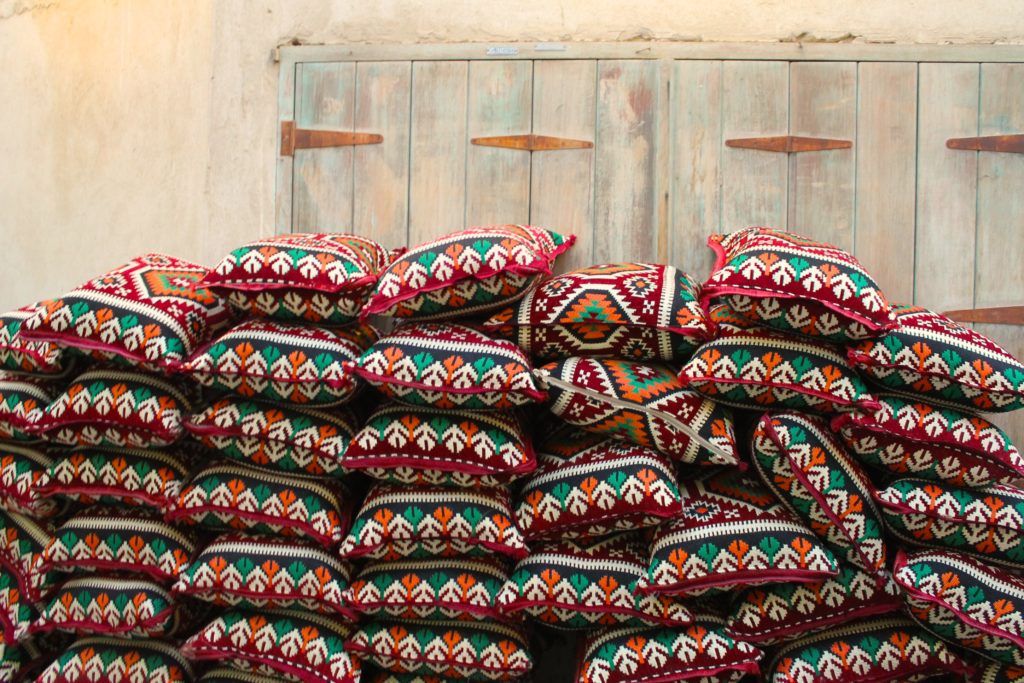
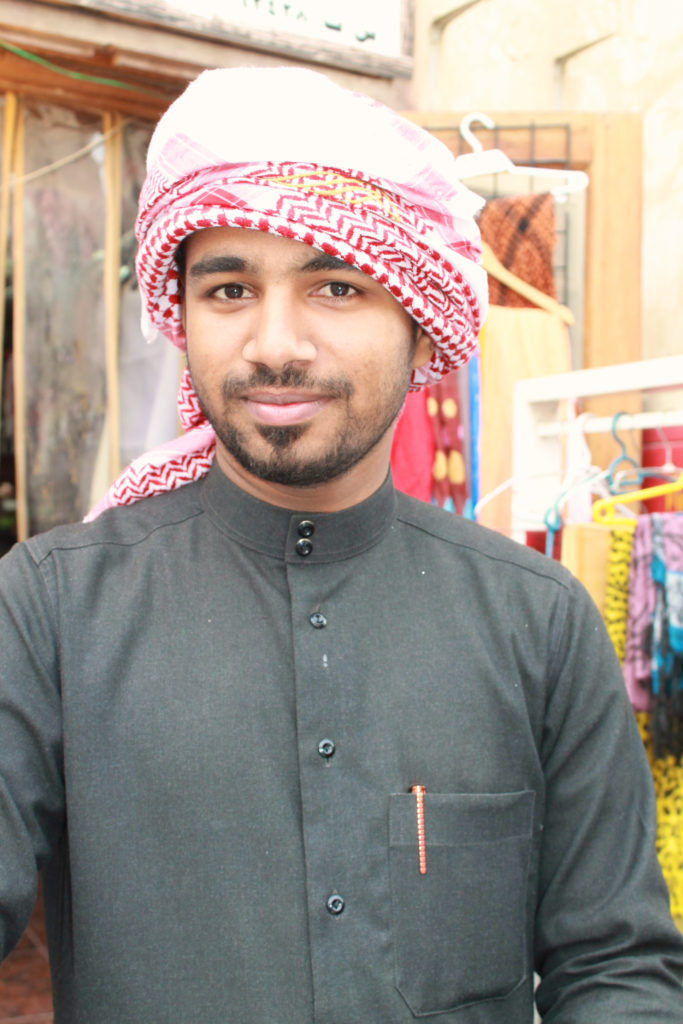
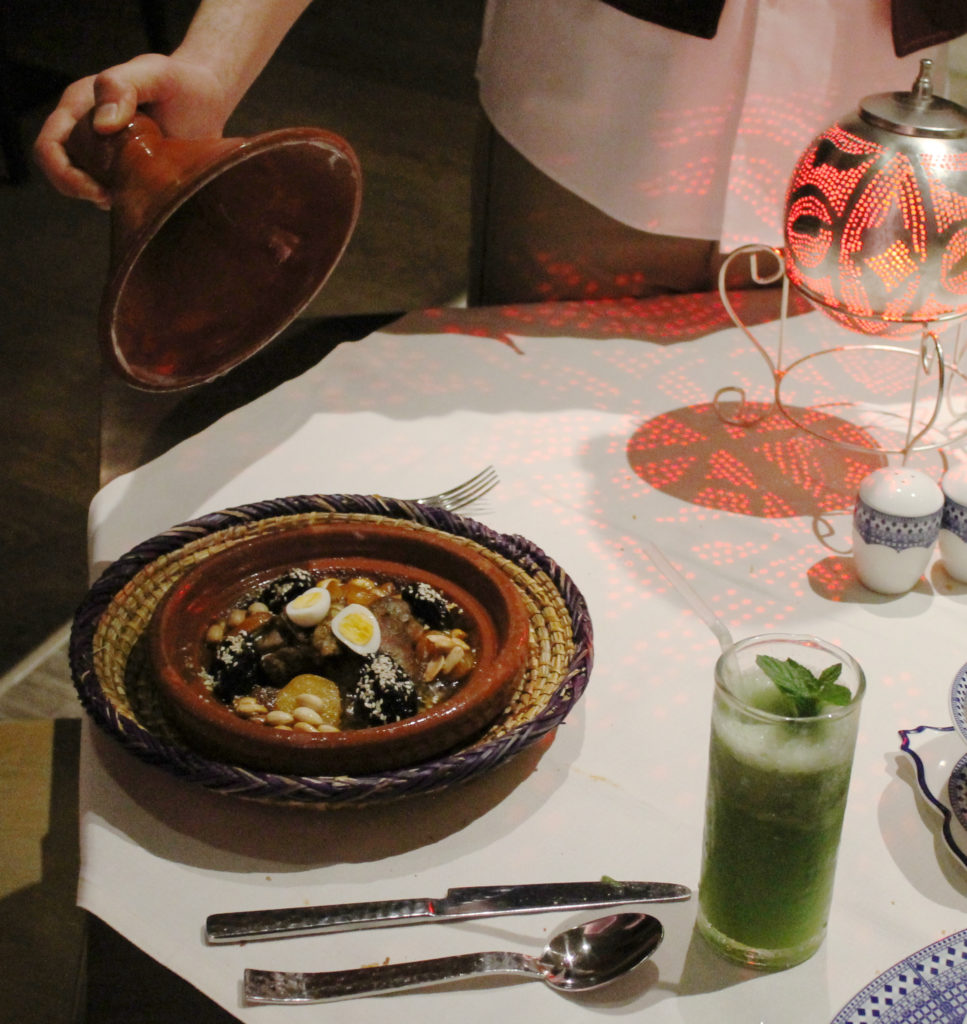
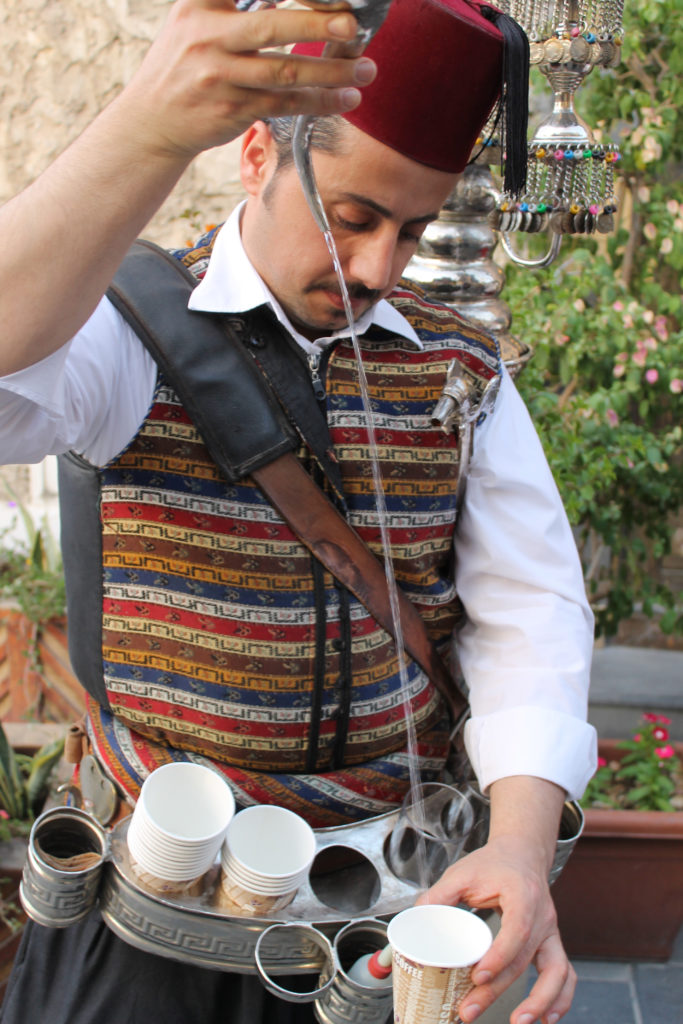
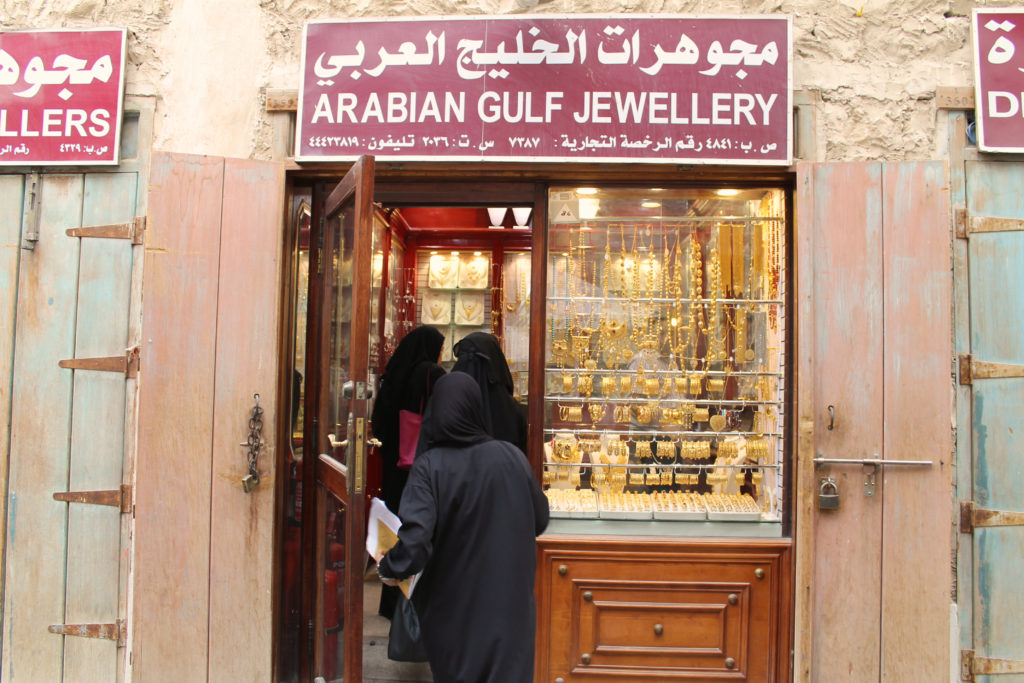
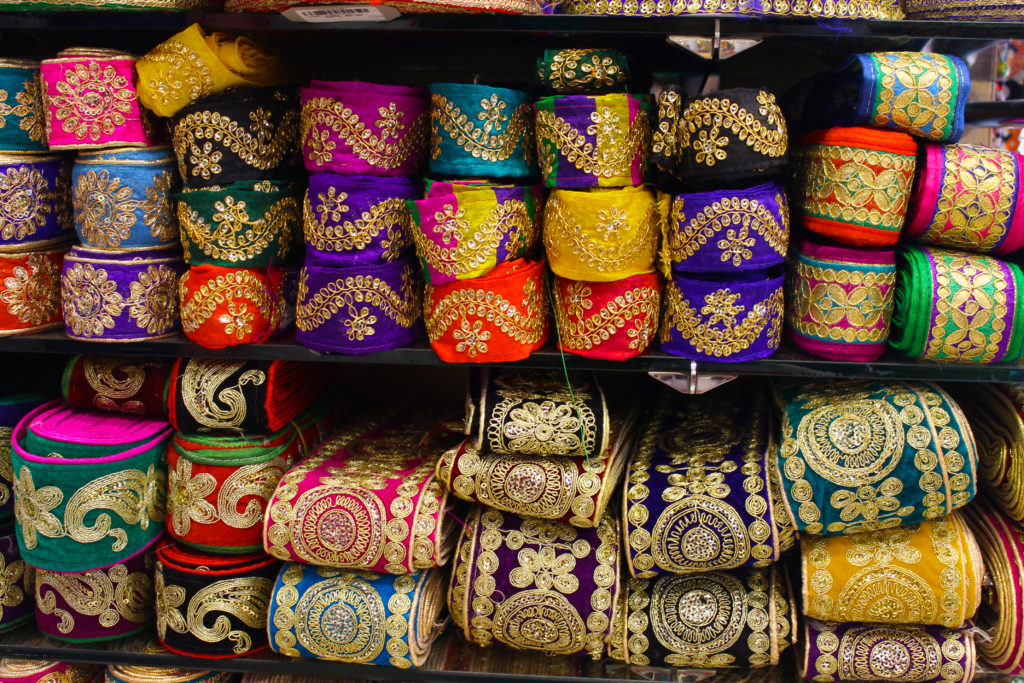
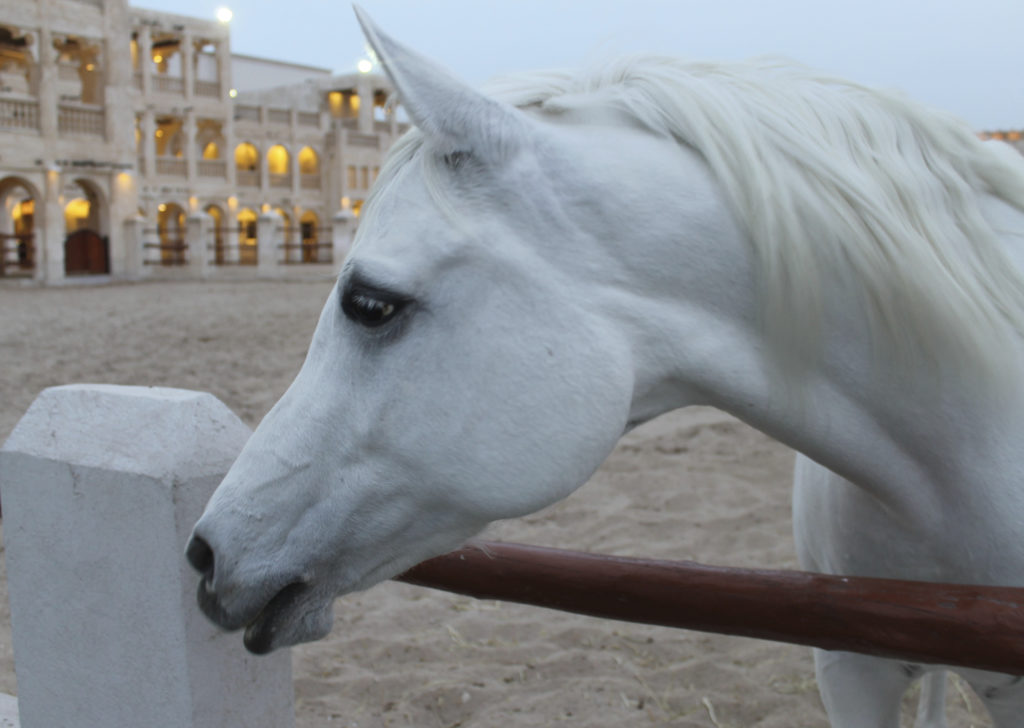

A wonderful article! Great descriptions of sensory and visual experiences make me want to go there! The information is alluring, helpful and clear. Very well written!!
Glad you liked it!
Wow….another wonderful and informative article on countries of the Middle East. I hope this will help people understand the Arab cultures and add a positive light to this part of the world so misunderstood. Thank You Chandy!
Hi,
Yes, it’s not a well-understood part of the world. I hope that my posts about it can add to some understanding!
That was really nice and detailed explanation. Good job Chandi. Its a perfect guide. I love Doha and since I also lived there for a few years, I can say the collection of hotels, restaurants and hang out places mentioned in the article, are definitely best Souq Waqif has to offer.
Thanks Surya. Hope to have a meal with you at one of those souq restaurants when I return to Doha!
Well done Chandi
That’s a highly evocative article and the photos are terrific!
Cheers, Julian
Thanks Julian! It’s such a fabulous place for photography!
Hey very interesting blog!
Wonderful! It’s my favorite place in Doha but haven’t really had the time to really explore it. Hoping I could do it soon.
Yes, it became my favorite place too. Are you newly living there?